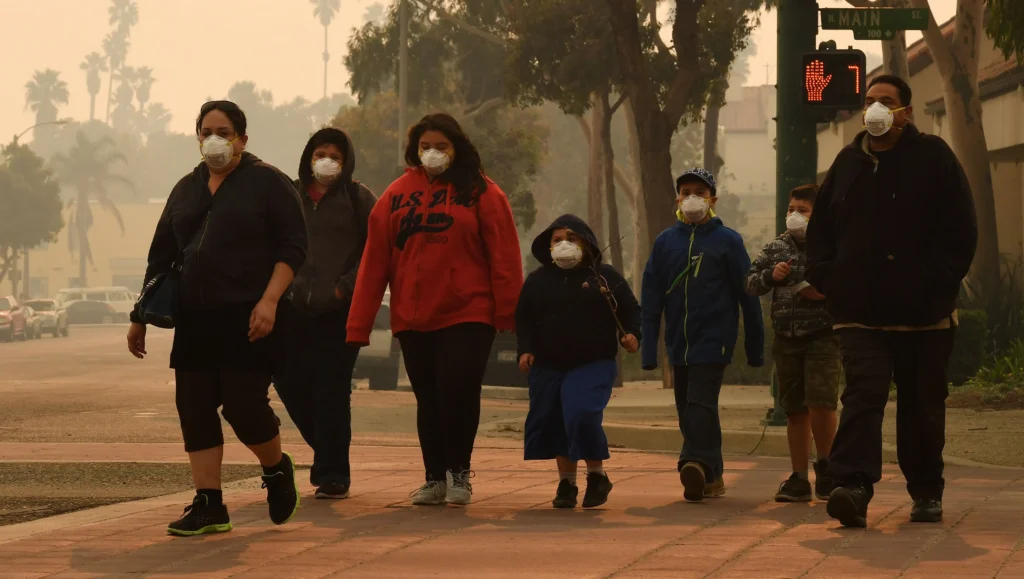Unraveling the HV.1 Variant: What You Need to Know

In late October, HV.1 surged to prominence, constituting approximately 25% of new coronavirus cases and emerging as the predominant strain in the United States.
Tracking the Rise of HV.1
Initially documented in low numbers over the summer by the Centers for Disease Control and Prevention (CDC), HV.1 has now claimed a significant share, responsible for a quarter of new coronavirus cases in the U.S. as of late October.
HV.1: A Subvariant of Omicron
Belonging to the omicron family, HV.1 traces its lineage to EG.5, the second most prevalent variant in the U.S., accounting for nearly 22% of new cases according to CDC estimates.
Similarities with EG.5 and the Global Impact
Health officials are not raising alarm bells over HV.1 due to its striking similarity to EG.5, also known as “eris,” the most prominent global strain, representing about 46% of cases worldwide as of late October, according to the World Health Organization (WHO). WHO’s estimate encompasses cases from HV.1 and another akin strain, HK.5.
Transmission Dynamics and Mutational Concerns
While HV.1 does not seem to induce more severe illness, it is expected to share the high transmissibility associated with eris. The growing number of cases raises concerns about potential variants with more mutations, posing challenges to existing immunity.
Dr. Perry N. Halkitis, the dean of Rutgers School of Public Health, highlights, “The concern about the multitude of mutations is that it is likely and possible that there are versions of the virus that will be more evasive to the immunity that people have.”
Vaccine Efficacy and Uptake Challenges
Fortunately, the similarity between HV.1 and EG.5 suggests that updated coronavirus vaccines are likely to be effective against the new strain. However, the impact of these vaccines is limited by the relatively low uptake. National survey data reveals that only about 7% of U.S. adults and 2% of children received the new COVID-19 vaccines during the initial month of availability.
Despite initial challenges with availability and insurance, health officials assert that these problems have been largely addressed. Nonetheless, a significant portion of adults and parents, approximately 38%, express hesitancy or unwillingness to get vaccinated.
Factors Influencing Vaccine Hesitancy
Vaccine fatigue, hesitancy, and a perceived lack of urgency contribute to the slow uptake. The widespread availability of vaccines and treatments has, to some extent, diminished the sense of urgency associated with COVID-19.
Dr. Halkitis explains, “We’ve opened a window of opportunity for people who are resistant to vaccination to say, ‘Well, it doesn’t look so bad anymore, so I’m just going to bypass it,’ just like how they react to the flu.”
Persistent Challenges and Winter Projections
Despite decreasing or stagnant COVID-19 weekly hospital admissions for nearly two months, CDC data indicates persistent challenges, with over 15,700 new admissions during the last full week of October—more than double the summer’s low in June.
As the late summer wave subsides and winter approaches, experts anticipate a resurgence in COVID-19 infections, particularly as cold temperatures drive people indoors.
Dr. Halkitis anticipates, “I expect there to be more rapid spread as is the case with any respiratory virus in the winter months.”
CDC’s Outlook and Evolving Variants
The CDC foresees a “moderate” COVID-19 wave, as outlined in its respiratory disease season outlook. While COVID-19 variants continue to emerge, they have not led to rapid disease surges. The CDC projects a moderate wave, with hospitalizations peaking at a level similar to last winter’s peak.
Experts acknowledge that the group of variants circulating in the U.S. will continue to evolve as the virus spreads and adapts.
Dr. Halkitis emphasizes, “The more we spread it to each other, the more it’s going to keep replicating in people’s bodies, and the more likely it will be that mutations are going to occur.”
Stay Protected: Invest in Quality N95 Masks Made in the USA
In the face of evolving COVID-19 variants like HV.1, it’s crucial to prioritize your safety. Consider investing in high-quality N95 masks made in the USA, known for their effectiveness in filtering airborne particles. Ensure you and your loved ones are protected during these uncertain times. Don’t compromise on safety—buy N95 masks made in the USA today.
Remember, taking proactive measures is key to safeguarding your health and that of those around you. Stay informed, stay safe.


